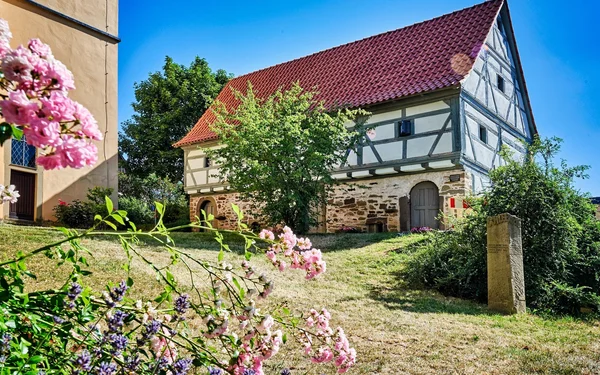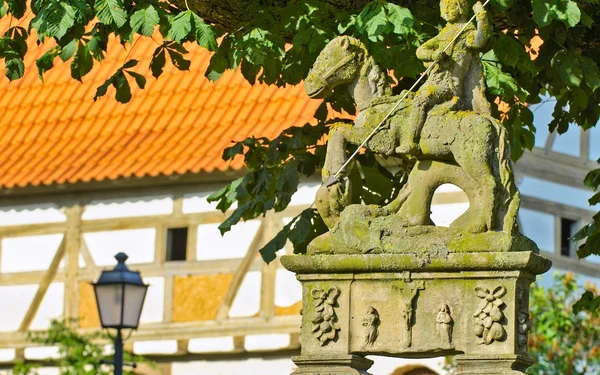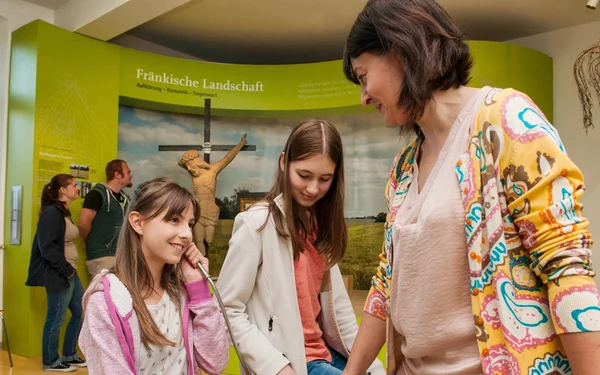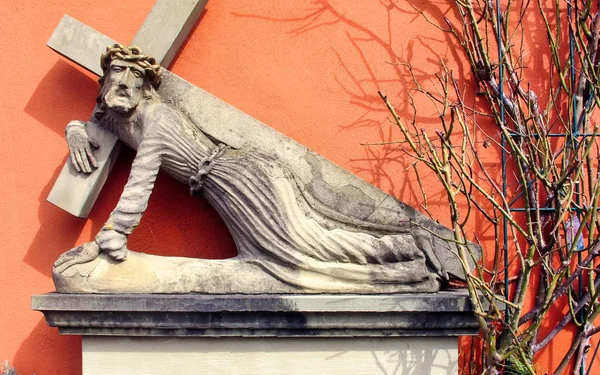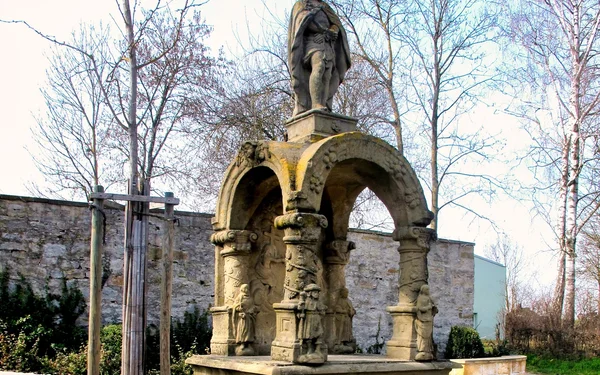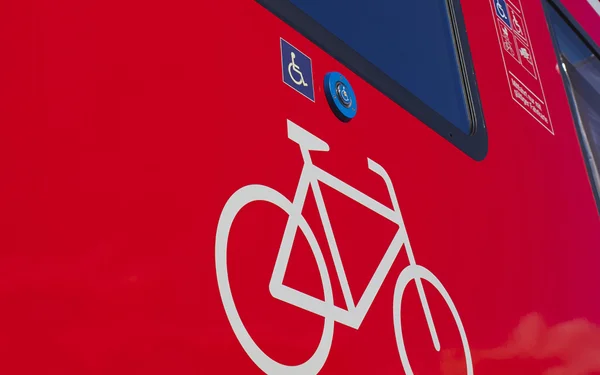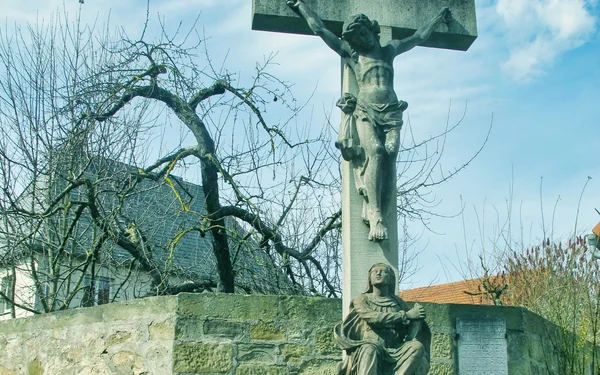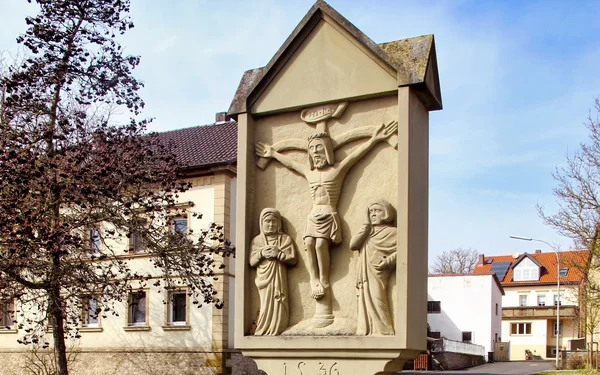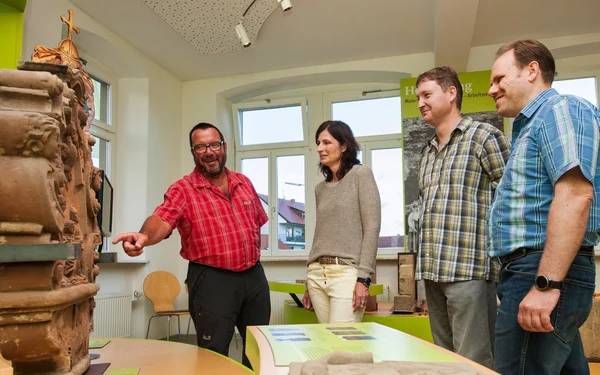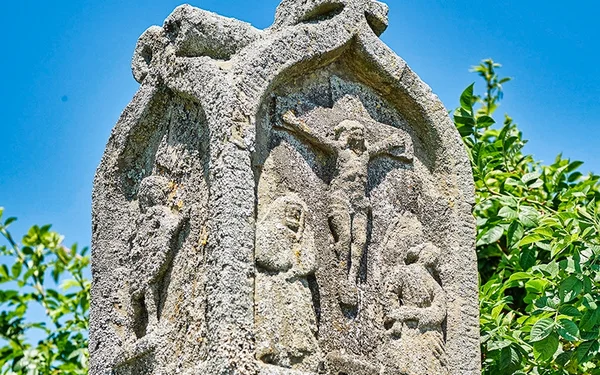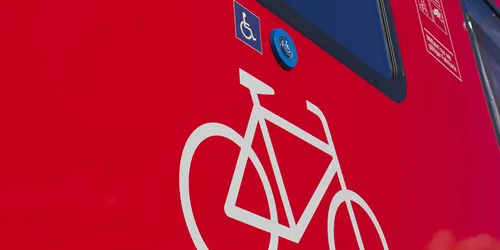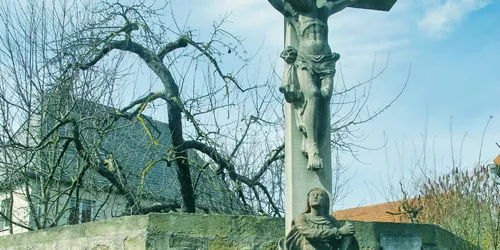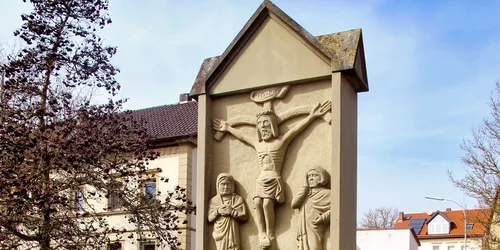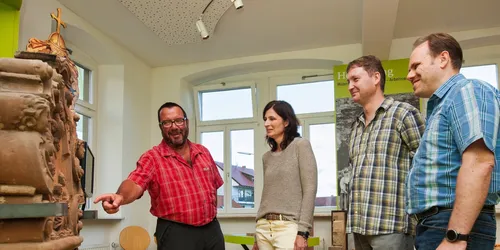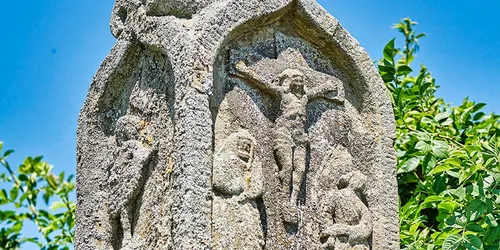Under the sign of the "Marterli" - from Eßleben to the Upper Werntal
Want to discover the Franconian way of life on a tour by train and bike? Then off to Eßleben! This cycle tour takes you right through the land of shrines, past around 80 wayside shrines.
Eßleben
3 h
41 km
Wayside crosses and wayside shrines bear witness to the piety of the people. For hundreds of years, these small religious monuments made of wood, stone and masonry have mostly been erected and maintained by the wayside, some decorated with flowers and candles.
In the Upper Werntal, these tokens of gratitude, reminders of misfortunes or simple impulses for prayer are particularly numerous. The region has over 600 of them. Wayside shrines from different eras and materials, with a wide variety of motifs and designs. This tour takes you right through the land of wayside shrines, past around 80 small monuments, and draws your attention to a few outstanding examples of this Franconian way of life.
A cycle tour for nature lovers, culture vultures and explorers
Arrive relaxed and hire bikes from local hire companies. The capacity for taking bikes on trains is limited and, depending on capacity utilisation, it is not possible to guarantee that you will be able to take your own bike with you.
Start and end station
Start station
Bahnhof Eßleben
5 tour steps
41 km / 3 Stunden
End station
Bahnhof Eßleben
Our tip: Please make sure to check your train connection and the expected capacity before you start your journey.
Schedule
Tour starts on Bahnhof Eßleben
Direction
Bahnhofstraße 30
97440
Werneck
Direction
Kirchstraße
97440
Werneck
Direction
Direction
St. Johannes-Straße 73
97440
Werneck/Egenhausen
